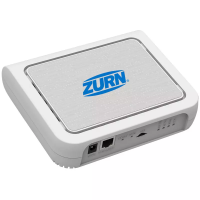10
PROCEPTOR
OWNER'S MANUAL
3.2 GREASE/OIL AND SOLIDS LEVELS
Solids generally settle to the bottom, and grease or oil will float on the top. Solids can block the inlet or outlet if the layer
becomes too deep. If grease or oil becomes too deep, the concentrated grease or oil will exit the separator and enter the sewer
pipe. This will cause problems in the pipe downstream, and may cause sewer backups into your facility.
In a single tank system, be sure to measure within the inlet side of the accessway. To determine the inlet side of the accessway,
look at your facility layout to figure out which direction the inlet would be coming in. If this is not clear, try running water down
the drain and watch the liquid in the tank to see if you can observe the direction of flow. In a double or triple tank system, it is
recommended to measure in all tanks.
Compare these measured amounts to the limits in Table 1 (page 11) to determine if a pump out is required.
Solids Layer
The solids layer depth can be determined two ways: either by probing with a graduated rod or weighted measuring tape or by
using a specially designed sampling/measuring tube (see section 3.3).
To measure with a rod or tape, slowly lower the rod or tape into the fluid on the inlet side of the accessway until increased
resistance is felt. Depending on your operation, this might be a soft layer (more typical of restaurants), or a harder layer (i.e.
sand in an oil separator). When resistance is met, hold the rod or tape steady and measure to the floor (top of cover). Subtract
this measurement from the previously measured tank depth to find inches or centimeters of solids.
Oil or Grease Layer
The oil or grease layer depth can be determined two ways; either with a dipstick rod and water finding paste, or by using a
specially designed sampling/measuring tube (see section 3.3).
Spread a thin coating of water level indicator paste (i.e. Kolor Kut) on the bottom six inches or so of the dipstick, measuring
tape or gauge rod. Slowly lower the measuring device into the liquid, coated end down, to where the oil-water interface is
anticipated. Mark the floor level against the rod.
Slowly pull the rod back up without stirring the oil. A change in color by the water paste indicates where the oil-water interface
occurs. The distance between the color change on the rod and the floor level is the ‘G’ dimension in Figure 4. The absence
of color change indicates that the measuring device did not reach far enough down to the oil-water interface, therefore
remeasurement is necessary.
3.3 TOTAL WASTE COLUMN MEASUREMENT
The sludge/solids, water and oil/grease level can be measured collectively in a sampling tube equipped with a built-in ball
check valve to hold the material. The tube should be graduated (marked in inches or centimeters with zero at the bottom) to
indicate the depth of the sludge, water level and oil or grease layer in the Proceptor separator.
Follow the manufacturer’s usage instructions. Slowly lower the dipstick tube to the bottom of the tank. Do not plunge the
device to the bottom as it will result in an inaccurate reading and possibly damage the ball check valve. Keep the dipstick tube
as vertical as possible when raising it up, without allowing it to bend or bounce while it is full of wastewater. A ‘water core’
sample should be visible within the tube showing the solids depth and oil/grease depth. Release the sample back into the inlet
side of the separator or dispose of according to acceptable practice.
3.4 TREATED WASTEWATER SAMPLING
The inspection/sample port at the outlet pipe is designed to allow sampling of the discharge to determine compliance with
local euent standards. There should be two ports (4" or 6") extended to grade and capped on either side of the access cover.
The outlet side port is the sample port. Avoid hitting the sidewalls of the sample port pipe, which can result in an inaccurate
reading. If there are no accessible sample ports, take a sample from the outlet side of the tank through the access cover.

